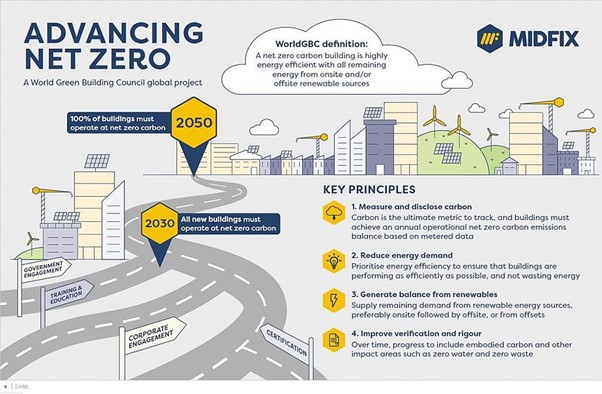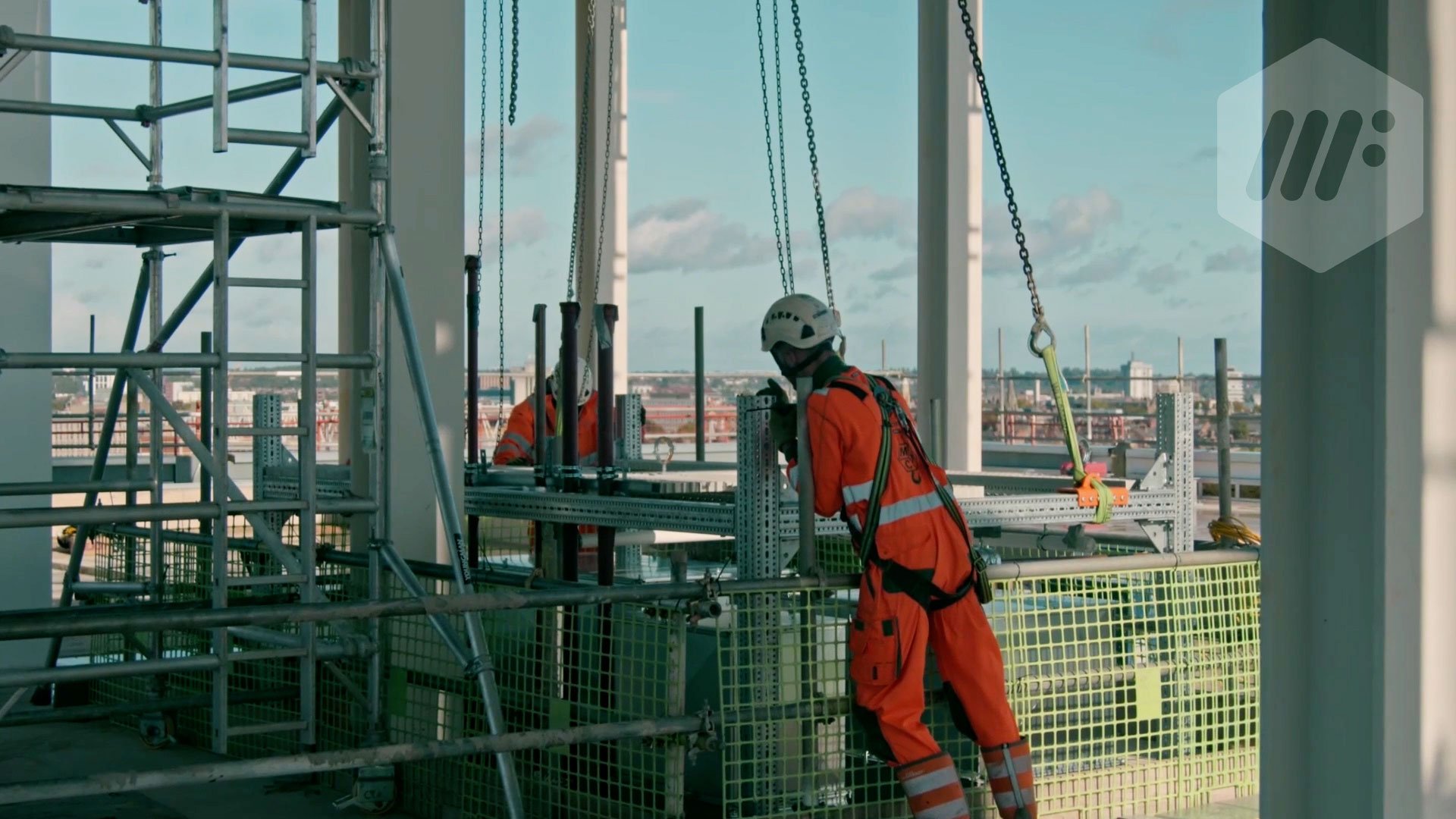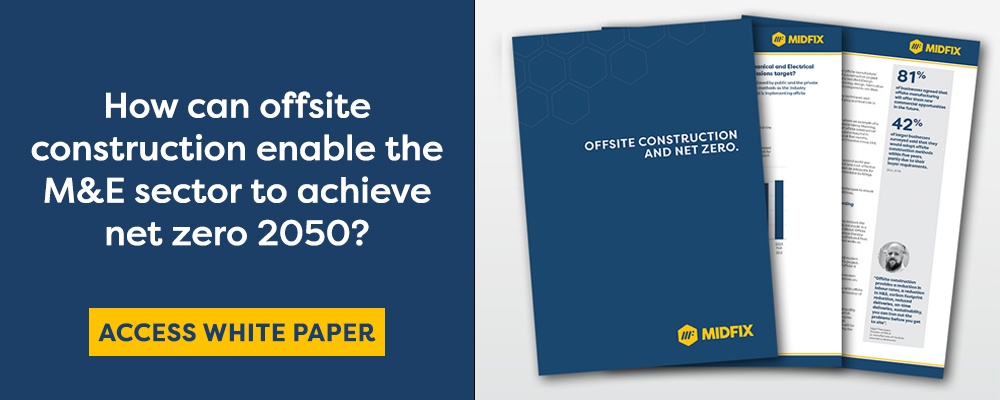You will no doubt have heard a number of conversations around the challenges facing the construction & M&E sector with the goal to meet net zero 2050 carbon emissions.
With recent regulation and guidance looking to encourage the sector to decarbonise projects and the growth in sustainable methods of construction such as off-site construction, there is still a great deal of work required to achieve net zero.
I am sure you have either managed or carried out an M&E installation on-site and thought:
How can the construction & M&E sector reach the net zero 2050 carbon emissions target with inefficient insulation?
The answer to this question starts with an open and honest dialogue with the entire construction & M&E supply chain, the policing of industry legislation and the continual drive to raise awareness of thermal efficiency within buildings.
To help you gain further insight into this question we sat down with Chris Ridge – the technical policy manager at TICA (Thermal Institute Contractors Association) to discuss the current situation and the importance of thermal contractors.
After listening to the podcast and reading the article you will understand:
The current progress to net zero 2050.
The heating and building strategy
What are the different types of heat networks available?
The challenges of poorly insulated pipework.
Code of Practice and pipe thickness insulation
How can early engagement help resolve space heating with residential applications?
How can early engagement help Manufacturers and Thermal Contractors?
Why do new buildings have to be ready for 2050?
Are there any other factors that can help us achieve net zero?
What are the challenges for building insulation when retrofitting buildings?
A short overview of the insulation and industrial market?
The implications of cheapest price vs spec compliance?
How can Modern Methods of Construction help?
What are TICA doing regarding Net Zero?
Please note the views expressed within this article are from Chris Ridge.
What is the current journey to net zero 2050 looking like?
Space heating in buildings contributes nearly 25% of the UK’s carbon footprint. We’ve been discussing decarbonisation for nearly a decade and progress has been slow. However, there is now a real drive in the industry to do something positive – this was clearly reflected during COP 26 in Glasgow. Whilst there is a clear focus across the sector to achieve net zero there is much to do in a short space of time. In fact, a huge amount of decarbonisation needs to be achieved by the end of the decade if we are going to meet 2050 targets. The drive to net zero will impact the whole construction sector, including the mechanical and electrical, and thermal insulation sectors.

The heating and building strategy
The UK government recently published the heating and building strategy in October 2021. This helped to shine a light on the space heating methods that will be employed in order to meet our 2050 targets. At the heart of the report is a very big commitment to heat pumps. Whilst heat pumps are effectively an “electrification” solution, the Coefficient of Performance associated with heat pumps means that they are a far more efficient use of the UK’s electricity grid than direct electric heating technology. However, heat pumps cannot be the sole answer and a diversified approach is required. The Heat and Buildings Strategy also highlights Heat Networks as a key driver for decarbonisation.
What are the different types of heat networks available?
Heat Networks take heat from a central source and distribute it to buildings and apartments within their network. Heat networks can include large district heating schemes as well as stand-alone schemes with central plant.
It’s worth pointing out that whilst heat networks rely on central plant (rather than localised boilers in each apartment for example), heat networks that are heated by waste to energy plants and water from local rivers and mines are often referred to as “decentralised” systems because they are operating separately to the electricity and gas grids.
We can expect to see more and more innovative solutions from a heat network perspective.
For centralised heat networks you will need to consider the heat losses from the source to the point of use. For example, the underground pipework that runs from the point of heat generation to the building (the primary network) and the pipework that runs from the incoming building plant area and through corridors and risers to individual apartments (the secondary network).
The challenges of poorly insulated pipework
A lot of work has been done around building insulation and the air tightness of buildings. However, if the pipe insulation specification is not fit for purpose this can result in excessive and costly heat losses and occupants living in buildings with overheating corridors and communal areas
What is the code of practice and how does it impact pipe insulation thickness?
At the beginning of this year, CIBSE released a code of practice for heat networks, CP1 code of practice for heat networks and it puts in some exacting performance criteria for insulation. This is perhaps a rare example of the wider industry getting involved in pipe insulation standards and a clear indication that good pipe insulation is being recognized as an important piece of the jigsaw when considering heat networks. Getting pipe insulation right can have a big impact in terms of heat loss and reducing the carbon within a building.
According to the code of practice, there should be a minimum insulation thickness of 50mm on heating pipework. This of course means that the pipe blocks and clips are going to have to size up too!
It will of course be interesting to see if a recognized minimum pipe insulation thickness will encourage architects to allow more room for services in ceiling voids and risers!
How can early engagement help resolve space heating with residential applications?
By the time the LTHW and domestic hot and cold services have been considered, ceiling voids can often be overcrowded with pipework. This can often leave the Thermal Contractor with very few options for the type of insulation they can use and can also make insulating to even the base British Standards really challenging. The code of practice should allow us to start an early, open, and honest conversation with design teams so that they can allow enough room in the building design for appropriate pipe insulation thicknesses.
How can early engagement help Manufacturers and Thermal Contractors?
The CIBSE CP1 Code of Practice states a maximum permissible heat loss value of 876 kW.h per dwelling per year. The M&E design team will have to prove that this can be achieved at the design stage. Reducing heat losses from the secondary heating pipework will play a big role in achieving the maximum permissible heat limits. This means that thermal insulation manufacturers will need to step up and offer W/m heat loss calculations based on project-specific information
- Thickness of pipe insulation
- Thermal (lambda) value of pipe insulation
- Service temperature of pipework
- Size of pipework
Currently, the pipe insulation specification is often lacking in performance detail and it is left open to interpretation by the contracting team at the eleventh hour. We know that if it is designed for and set in stone in the early stages of a project then pipe insulation will only go wrong if someone breaks the specification and with the code of practice that will be more difficult to do.
I think the CIBSE code of practice will drive further awareness across the entire supply chain. The code of practice will help to focus mechanical contractors’ minds on the thermal performance of the pipework system and encourage them to specify and install thermally efficient insulated pipe supports to the same thickness as the insulation system, rather than turning to less efficient options. Installers will also be more inclined to carry out a compliant installation. This will all help to ensure the heating network within a building is efficient.

Why do new buildings have to be ready for 2050?
It is imperative that we do get to a position where this is policed and heat network projects undergo a rigorous quality assurance approach. 20% of the buildings that will be around in 2050 have not been built. I think it’s useful to see things almost like a balance sheet, where every building that does not meet that criteria goes into that liability column, and every building that is being built 2050 ready or 2050 enabled (with a few improvements it will be 2050 ready) is an asset.
Are there any other factors that can help us achieve net zero?
If we look at the UK’s carbon reduction timeline, the various forecasts show that we are focusing on operational carbon in the medium term – this is where the switch to heat pump and heat network technology will hopefully do a large amount of the heavy lifting. The work now needs to be done to get things working of course, but if we are successful then by the 2030’s a large proportion of what is left will be tied up Embodied Carbon (the carbon footprint associated with the manufacturing and distribution of actual building materials). Embedded carbon is probably a more challenging one to face but good work is already being done in this regard. emphasis on embedded carbon is going to see a concentration on retrofitting buildings rather than building new.
What are the challenges for building insulation when retrofitting buildings?
The growing emphasis on embedded carbon is going to see a concentration on retrofitting buildings rather than building new ones. 80% of the buildings that will be around in the UK in 2050 have already been built. How many of these are net zero carbon ready? Retrofitting places a greater importance on the M&E sector as building services will often be the biggest single element of future retrofit projects. The ideal situation would be if we could replace gas boilers with heat pumps, but this may not be possible in all circumstances. We can hope that hydrogen will play a part, but it is unlikely to do so this decade. On the most basic level building owners can start checking that their pipe insulation is adequately installed and ask the following questions.
Is there pipework system adequately insulated?
Are the valves insulated?
Insulation and the Industrial Market
The industrial market and the impact of insulation is quite remarkable. According to the EIIF ‘Industrial Insulation’ Fact sheet 2021, the national insulation savings potential from insulating pipework in the industrial/power generation markets alone is equivalent to the annual energy consumption of: 863,000 households or more than 1.7 million cars.

The implications of cheapest price vs spec compliance #1
It would be good if everybody started taking notice of how important pipe insulation is. M&E contractors and main contractors must take the work thermal contractors do seriously as it would make a huge difference in terms of the energy performance of a building. If M&E Contractors are to keep ahead of the curve they will need to place a higher value on thermal insulation as a key enabler for a successful project. My suggestion would be that there are some really good thermal contractors out there who understand what heat networks are aiming for - speak to them about the specification at early stages.
The implications of cheapest price vs spec compliance #2
Actually, the value of doing things right is very important. We need to examine the overall lifetime cost of constructing and operating a building and ensure the M&E services are as efficient as they can be. By insulating pipework correctly, we can ensure that the building will cost a lot less over the building's life span and emit a lot less carbon. When people talk about price and focus on the initial capital cost only, they are robbing the future for the present.
In many cases, the cheapest price that comes in can be the result of a contractor misunderstanding the level of insulation or type of insulation required in a specification. As a result, two things can happen: either the contractor will get hit in the pocket because they must amend the insulation, or they get away with it and the problem is passed down to the occupant/owner resulting in overheated buildings and energy losses. It is therefore important to open up a dialogue with the thermal contractor at an early stage of the project.
Are Modern Methods of Construction helping the sector achieve net zero?
I think what has been missing from the conversation is that on-site elements are often siloed. Problems can occur when the Thermal Insulation Contractor is not involved with the offsite process. We should start by asking the following questions:
How do we ensure continuity of product and specification compliance when the Offsite facility favours product A and the Thermal Contractor favours product B?
How do we decide who is responsible for the thermal insulation workmanship at junctions between the offsite and onsite installation?
I think that the insulation contractor should be consulted at an early engagement stage and should be involved in the decision-making process. The chosen insulation material and thermal performance specification should be agreed between the Thermal Insulation Contractor and their client before the final offsite module designs are completed. The Thermal Insulation Contractor should then be employed to manage the thermal insulation installation, both onsite and offsite.

The importance of Net Zero Carbon and what are TICA are doing?
The drive towards Net zero carbon is definitely gathering pace. Last year’s release of the construction playbook placed a greater emphasis on net zero carbon. Recently the government have introduced procurement rules, these rules mean that any contractors looking to bid on a government contract above £5 million must outline a carbon reduction plan to show how they will achieve net zero. We can expect this practice to filter through to M&E Contractors and Thermal Insulation Contractors as Main Contractors look to show that they are behaving responsibly within their own supply chains.
We recently installed solar panels at TICA house. They will supply all our newly installed electric vehicle charging points with renewable energy and help us to encourage the uptake of electric vehicles. We are also taking many other small but meaningful steps. It is a journey we are going through so we can show our members what it is going to look like. I would suggest that we are all in this together and we are all going to have to undergo a similar journey.
REFERENCES
The Heating and Building Strategy [Gov UK, 2021] accessible: https://assets.publishing.service.gov.uk/government/uploads/system/uploads/attachment_data/file/1036226/E02666137_CP_388_Heat_and_Buildings_Accessible.pdf
CIBSE/ADE CP1 (2020) Code of Practice [purchased here: https://www.cibse.org/knowledge/knowledge-items/detail?id=a0q3Y00000IMrmGQAT]


